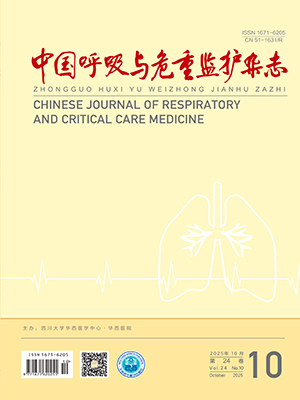| 1. |
Fukumoto J, Fukumoto I, Parthasarathy PT, et al. NLRP3 deletion protects from hyperoxia-induced acute lung injury. Am J Physiol Cell Physiol, 2013, 305(2): C182-C189.
|
| 2. |
Ferrando C, Aguilar G, Piqueras L, et al. Sevoflurane, but not propofol, reduces the lung inflammatory response and improves oxygenation in an acute respiratory distress syndrome model: a randomised laboratory study. Eur J Anaesthesiol, 2013, 30(8): 455-463.
|
| 3. |
Luo C, Yuan D, Zhao W, et al. Sevoflurane ameliorates intestinal ischemia-reperfusion-induced lung injury by inhibiting the synergistic action between mast cell activation and oxidative stress. Mol Med Rep, 2015, 12(1): 1082-1090.
|
| 4. |
石敏, 金国萍, 刘庆辉, 等. 高氧性急性肺损伤大鼠模型的建立与评价. 中国呼吸与危重监护杂志, 2011, 10(2): 144-147.
|
| 5. |
Blackwell TS, Hipps AN, Yamamoto Y, et al. NF-kappaB signaling in fetal lung macrophages disrupts airway morphogenesis. J Immunol, 2011, 187(5): 2740-2747.
|
| 6. |
Kim YE, Park WS, Sung DK, et al. Intratracheal transplantation of mesenchymal stem cells simultaneously attenuates both lung and brain injuries in hyperoxic newborn rats. Pediatr Res, 2016, 80(3): 415-424.
|
| 7. |
Idriss HT, Naismith JH. TNF alpha and the TNF receptor superfamily: structure-function relationship(s). Microsc Res Tech, 2000, 50(3): 184-195.
|
| 8. |
陈玉强, 房学东, 王跃生, 等. 半胱氨酸蛋白酶-8 在大鼠小肠缺血再灌注后 TNF-α 诱导肺损伤中的作用. 中国老年学杂志, 2011, 31(3): 470-471.
|
| 9. |
Watanabe K, Iwahara C, Nakayama H, et al. Sevoflurane suppresses tumour necrosis factor-alpha-induced inflammatory responses in small airway epithelial cells after anoxia/reoxygenation. Br J Anaesth, 2013, 110(4): 637-645.
|
| 10. |
Allen TC, Kurdowska A. Interleukin 8 and acute lung injury. Arch Pathol Lab Med, 2014, 138(2): 266-269.
|
| 11. |
Miller EJ, Cohen AB, Nagao S, et al. Elevated levels of NAP-1/interleukin-8 are present in the airspaces of patients with the adult respiratory distress syndrome and are associated with increased mortality. Am Rev Respir Dis, 1992, 146(2): 427-432.
|
| 12. |
Birukova AA, Tian Y, Meliton A, et al. Stimulation of Rho signaling by pathologic mechanical stretch is a "second hit" to Rho-independent lung injury induced by IL-6. Am J Physiol Lung Cell Mol Physiol, 2012, 302(9): L965-L975.
|
| 13. |
麦振华, 姚华国, 张媛莉, 等. 血管生成素-1 对脓毒症小鼠肺血管通透性的影响. 中国急救医学, 2013, 33(5): 399-401.
|
| 14. |
Yang Y, Wang WF, Li YH, et al. Sevoflurane attenuates ventilatorinduced lung injury by regulating cPLA2 expression. Mol Med Rep, 2018, 18(3): 2923-2928.
|
| 15. |
O'Gara B, Talmor D. Lung protective properties of the volatile anesthetics. Intensive Care Med, 2016, 42(9): 1487-1489.
|
| 16. |
Ishibe Y, Gui X, Uno H, et al. Effect of sevoflurane on hypoxic pulmonary vasoconstriction in the perfused rabbit lung. Anesthesiology, 1993, 79(6): 1348-1353.
|
| 17. |
Rodriguez-Gonzalez R, Baluja A, Veiras DRS, et al. Effects of sevoflurane postconditioning on cell death, inflammation and TLR expression in human endothelial cells exposed to LPS. J Transl Med, 2013, 11: 87.
|
| 18. |
Sun XJ, Li XQ, Wang XL, et al. Sevoflurane inhibits nuclear factor-kappaB activation in lipopolysaccharide-induced acute inflammatory lung injury via toll-like receptor 4 signaling. PLoS One, 2015, 10(4): e122752.
|
| 19. |
Wang L, Ye Y, Su HB, et al. The anesthetic agent sevoflurane attenuates pulmonary acute lung injury by modulating apoptotic pathways. Braz J Med Biol Res, 2017, 50(3): e5747.
|




